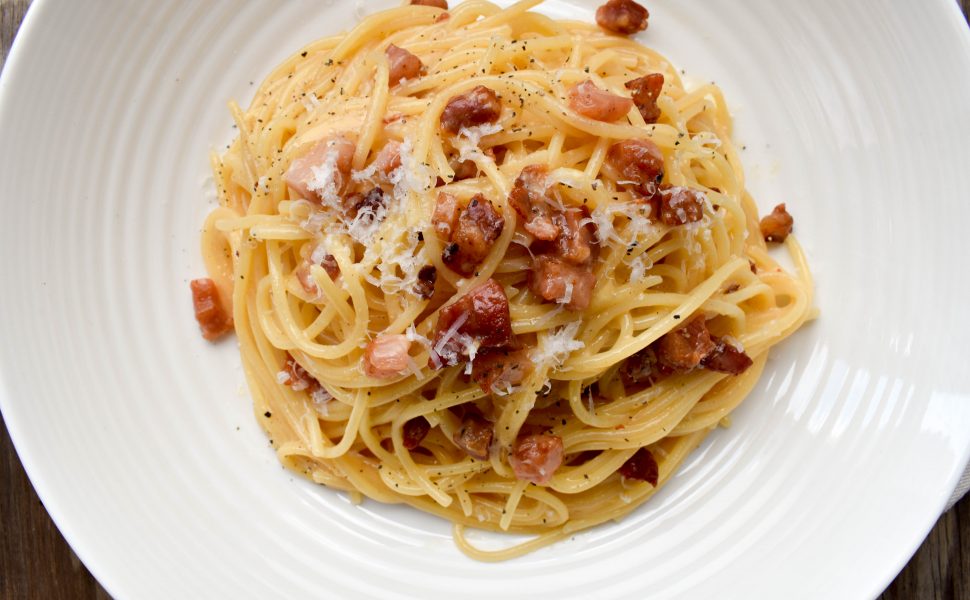an Tradition
Discover the true taste of Rome with this traditional Carbonara—creamy, indulgent, and made without any cream.
🛒 Ingredients (Serves 4)
- 350 g spaghetti (or bucatini/rigatoni)
👩🍳 Step-by-Step Instructions
- Cook the pasta
Boil pasta in salted water until al dente. Reserve ⅓ cup of pasta water before draining. - Crisp the guanciale
In a cold pan, cook guanciale over medium heat until crisped and fat has rendered. Remove the pan from heat. - Prepare the sauce
Whisk together egg yolks, Pecorino, and black pepper. Add a bit of hot pasta water to form a smooth paste. Combine off the heat
With pan off heat, add drained pasta to the rendered fat and toss. - Add egg-cheese mixture
Add the egg-cheese mixture while tossing quickly to create a creamy, emulsified sauce. Use more pasta water to adjust creaminess. - Serve immediately
Return guanciale morsels to the dish, toss gently, and plate. Garnish with additional Pecorino and black pepper. Serve hot.
💡 Tips from Roman Tradition
- No cream or garlic—authentic Carbonara relies purely on the emulsion of egg, cheese, and pasta water.
- Off-heat mixing ensures a smooth sauce without scrambling the eggs .
- Guanciale is key—its fat provides a rich, authentic flavor; bacon is a non-traditional substitute.
- Salt with care—the guanciale and Pecorino are salty, so only lightly salt the pasta water.
- Classic pasta types include spaghetti, bucatini, rigatoni, or tonnarelli .
🧭 Origins & Context
Carbonara is a Roman dish that emerged in the mid-20th century, likely post–World War II. It evolved from older Roman pasta like gricia or cacio e uova, incorporating American ingredients like bacon and powdered eggs brought by soldiers. The term “carbonara” first appeared in print around 1950, further tied to this era .
✅ In a Nutshell
Pasta Carbonara celebrates simplicity: premium ingredients, precise technique, and authentic flavor. No cream. No garlic. Just silky pasta, savory guanciale, sharp Pecorino, and bold black pepper—an enduring taste of Italian culinary heritage.

Leave a Reply